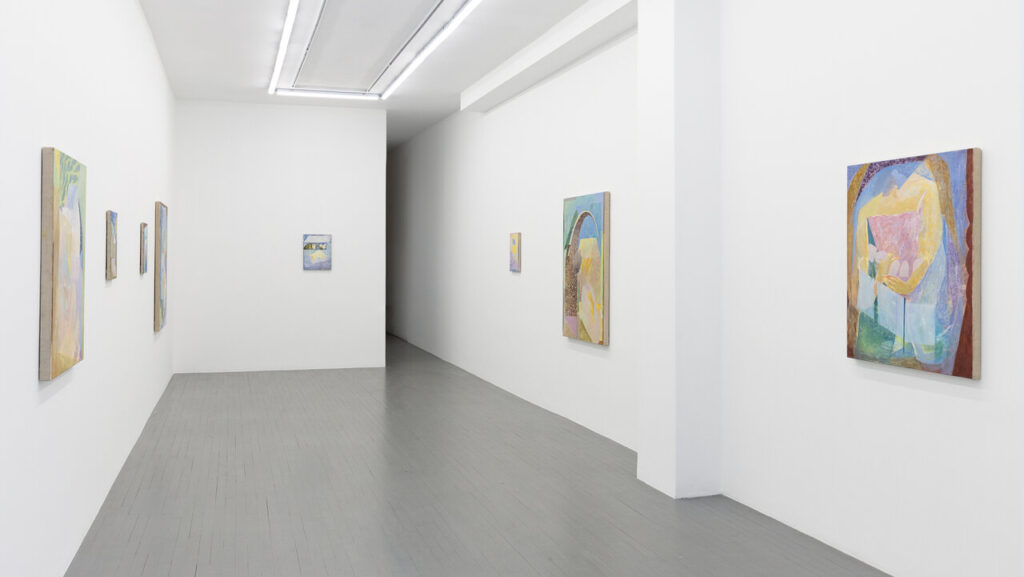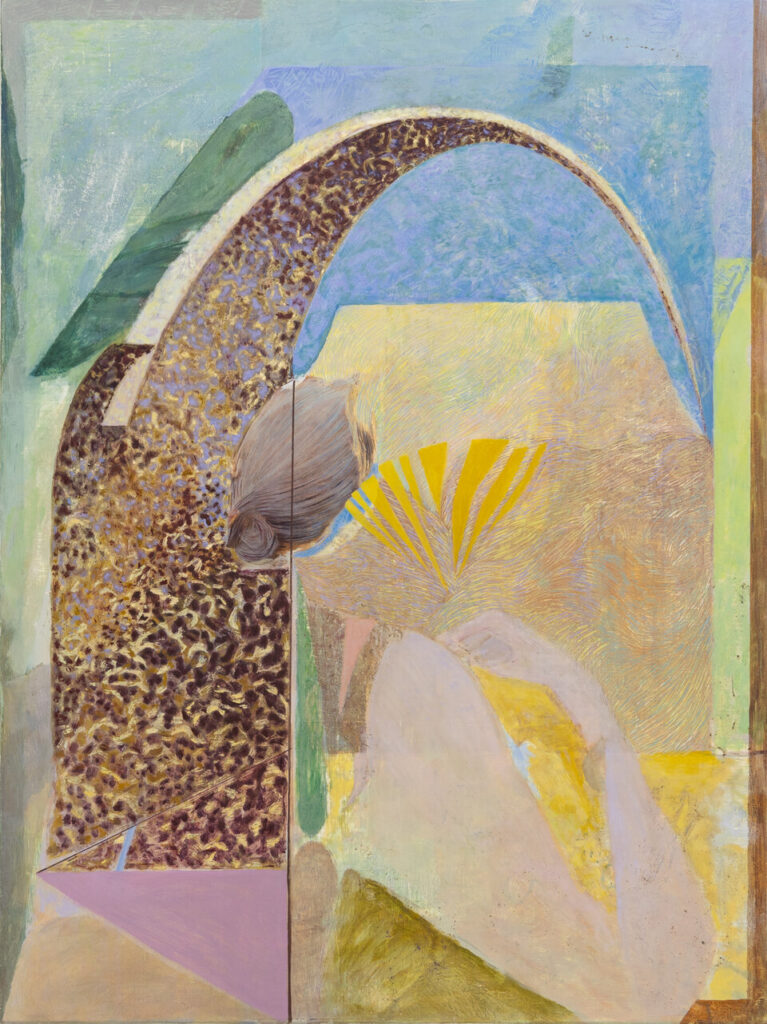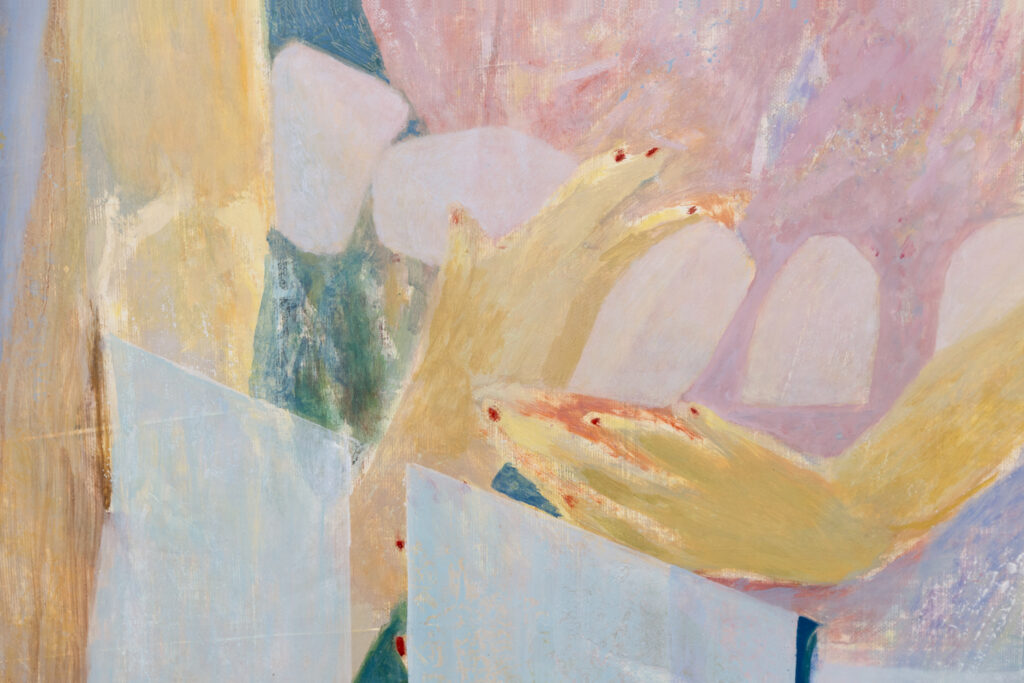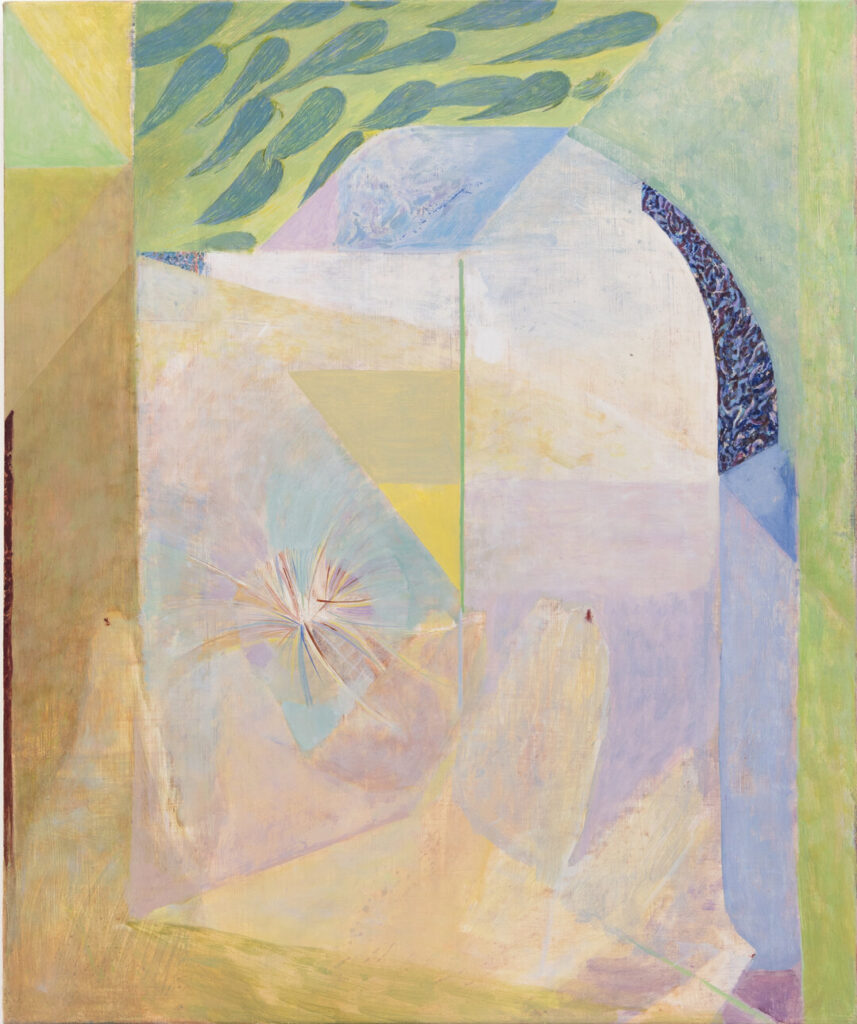Montreal-based Iranian artist, Pardiss Amerian’s work primarily draws from the cultural history and literature of Persia, exploring and recontextualizing its artifacts and folklore to create an imagined place of her own. Her second solo exhibition at Zalucky Contemporary titled Embrasure continues her exploration of the vast and ancient stories of the Persian world, this time, drawing inspiration from the historic site Taq Kasra, also known as the Arch of Ctesiphon, situated in present-day Iraq. Taq Kasra contains the remains of the palace of the ancient capital city of Ctesiphon, notable for its impressive architectural engineering of a monumental brick archway. In Embrasure, the arch is reproduced and reinterpreted throughout the paintings, alongside abstracted images of nature and human figures; Amerian constructs a fantastical world that transcends time, blurring the lines between the historical past and the present.
Installation view of Pardiss Amerian, Embrasure, 2025 at Zalucky Contemporary
Themes of temporality and transcending history can be seen evenly in Amerian’s unique method of painting. She builds up layers of paint and sands them down, not only producing a frayed, distressed texture like that of an excavated ancient fresco, but also revealing layers of colour, or at some places even the linen canvas underneath. The choice of using linen canvas, as opposed to the more popular cotton canvas, lends well to her painting process, with its organic and irregular textured weave. There is additionally some form of collage in her painting method; shapes and colours overlap each other through the sanded down layers. The exhibition text describes her process as “palimpsests of the present”, meaning the present still bears traces of the past. Amerian’s canvasses complicate our linear understanding of time; the past is never truly past.
Pardiss Amerian, Caustic bend, 2025, oil on linen, 48 x 36 inches
The painting named after the exhibition title Embrasure evokes much of the recurring themes that threads each artwork together. While the Taq Kasra archway is the primary source of inspiration for the exhibition, the human figure, instead, takes up most of the composition in this piece. However, slightly out of frame, an arched shape encompasses over the body of the figure, mirroring its hunched over pose, signalling the body’s strength and endurance. Indeed, the rendering of the human figure, despite the painting’s shallow space, accentuates its volume. The figure caresses indistinct geometric shapes, gathering them, as if in the midst of creating something. Amerian demonstrates that the monumental Taq Kasr and the legacy of Persian culture still exist through the strength of its people. The long-lasting power of ancient artifacts continues into the present because its core a human story.
Pardiss Amerian, Embrasure, 2025, oil on linen, 36 x 30 inches, detail
Nature also persists throughout the paintings. Blending into geometric forms or architectural motifs, water flows independently from gravity, cypress trees resemble shields, spears or fire, fish swim across walls or the sky, and flowers seem to burst from the figures’ hands like a ball of light. Amerian continues blurring lines, between abstraction and figuration. Familiar objects appear across the gallery but in simple, abstracted forms that they morph, fuse, or call for hybrid interpretations. The limited palette of pastel purples, greens, and yellows throughout the artworks further this amalgamation of melding figurations.
Pardiss Amerian, Sending word, 2025, oil on linen, 36 x 30 inches
Accompanied with the exhibition is an excerpt of a poem by the famous 12th century Persian poet Khaqani, writing about his visit to the Taq Kasra ruins. The excerpt includes similar imagery with Amerian’s paintings; “the foaming lips of the river”, or “the severing chain of justice”. Both Khaqani and Amerian, though separated by centuries, drew from their shared cultural past to create their own personal cultural expressions.
The exhibition text reads, “the forces of nature and human activity are constantly in flux.” I’d like to add that these forces are also cyclical; one instance can affect another, or perhaps, they mutually affect each other, intrinsically interconnected liberated from time and space. In Embrasure, Amerian gathers seemingly disparate symbols together as building blocks for an imagined world, ultimately undoing the linearity of history, focusing instead on expressions of human endurance.
Rebekah Barona
Images are courtesy of Zalucky Contemporary.
*Exhibition information: Pardiss Amerian, Embrasure, February 13, 2025 – March 29, 2025, Zalucky Contemporary, 3044 Dundas Street W. Toronto. Gallery hours: Thursday to Saturday, 12 – 5 pm or by appointment.




